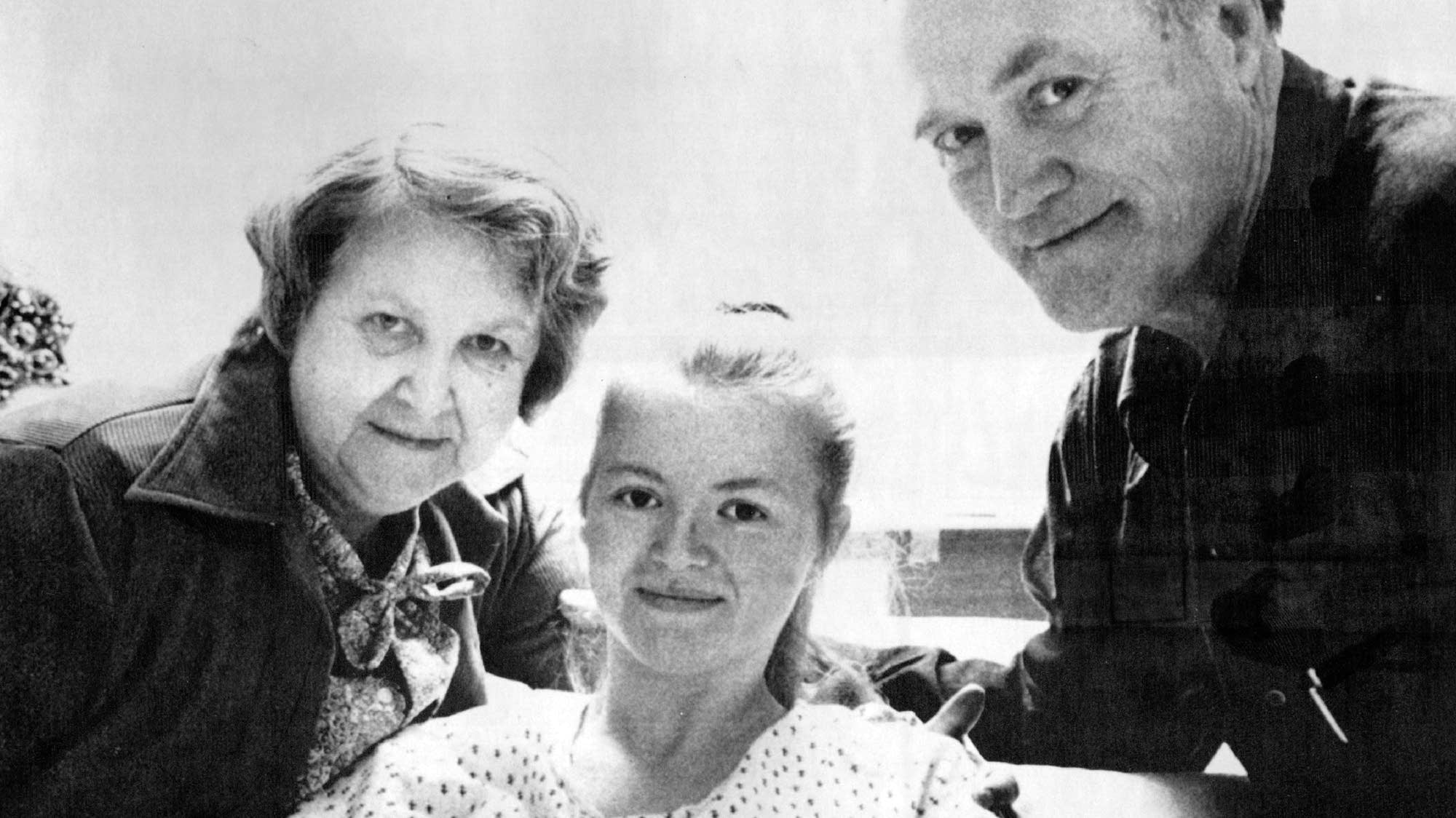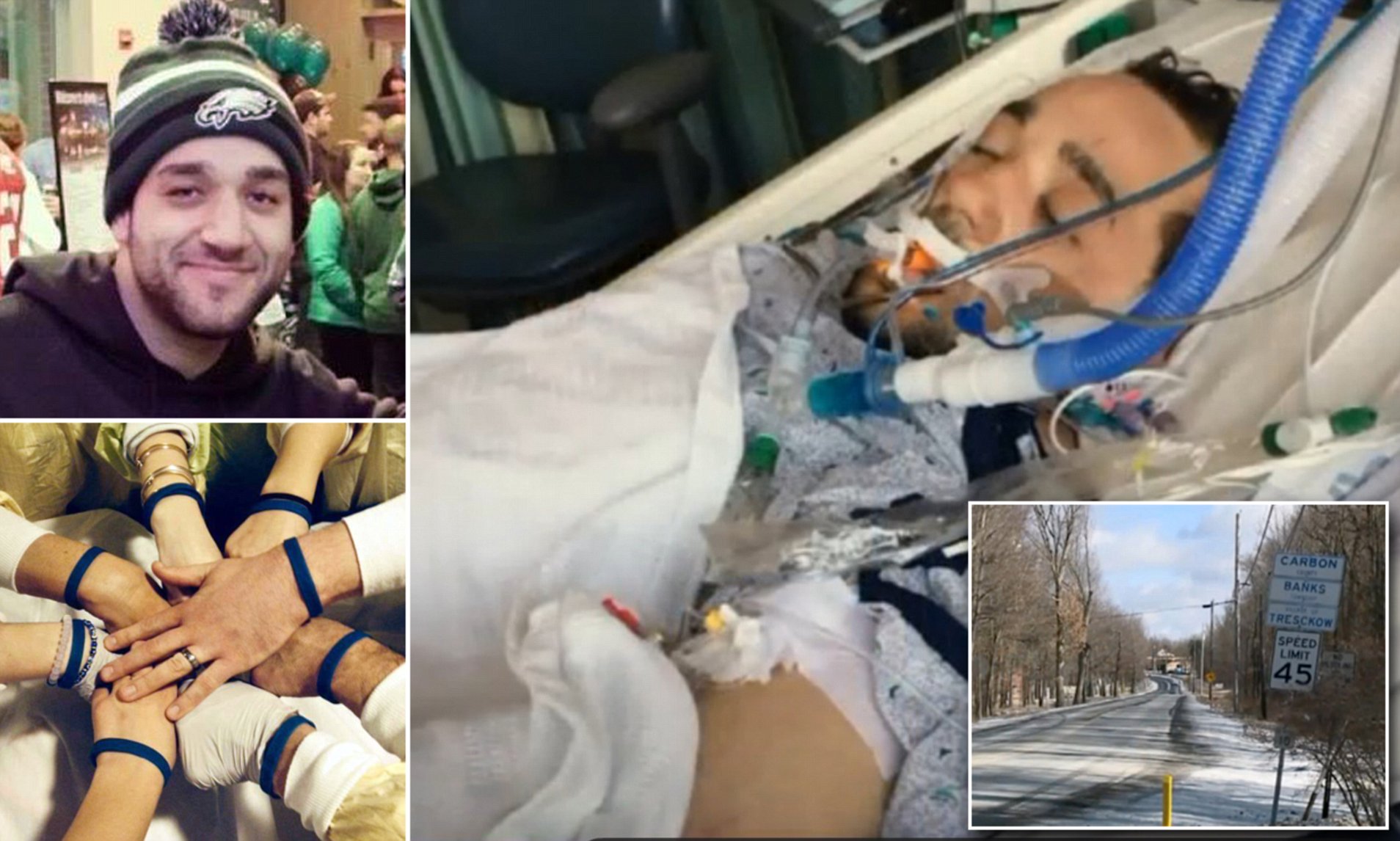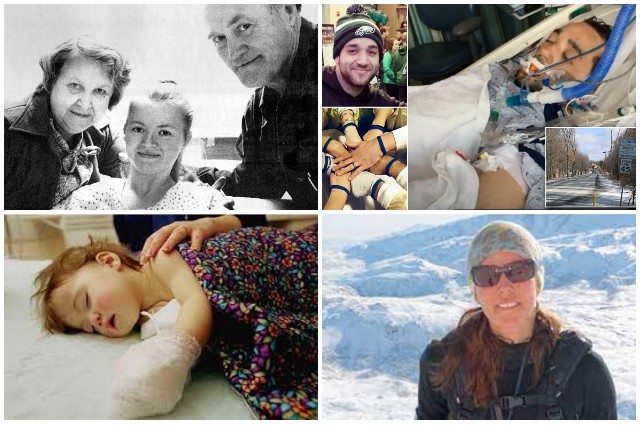When a person’s body temperature drops significantly and they experience severe cold exposure, a condition known as hypothermia, it can lead to vital organ failure and eventually death. However, there are cases where individuals who have experienced extreme cold have been successfully revived using specific techniques. These 5 people luckily escaped death after they where exposed to extreme cold.
-
Jean Hilliard

In the winter of 1980, during a freezing December night in Lengby, Minnesota, Jean Hilliard, a 19-year-old, encountered a chilling ordeal. While driving back home to her parents’ house, her car slid off a side road due to the icy conditions. Bundled up in a coat, mittens, and cowboy boots, Jean found herself stranded as her vehicle became immobile. Determined to seek help, she decided to trek to a nearby friend’s house on foot.
Unfortunately, the extreme cold took its toll on Jean, and a mere 15 feet away from her friend’s door, she succumbed to the grips of hypothermia, collapsing in the frigid air. Unbeknownst to her, Wally Nelson, her friend, discovered her lifeless body the following morning, frozen solid. Recounting the incident in a 2018 Minnesota Public Radio interview, Nelson revealed, “I grabbed her by the collar and slid her into the porch. I thought she was dead. She was frozen stiff as a board, but I noticed a few bubbles escaping from her nose.”
When Hilliard eventually arrived at the hospital, her condition was dire. Her pulse registered a mere 12 beats per minute, and her body temperature had dropped to 88° F, as reported by the New York Times. The medical staff swiftly sprang into action, employing an electric warming blanket to thaw Hilliard’s frozen body. Over the course of several hours, her temperature gradually returned to normal, and to everyone’s astonishment, she made a complete recovery from this harrowing experience.
2. Justin Smith

In 2016, Justin Smith, a 25-year-old resident of Pennsylvania, experienced a harrowing incident that brought him to the brink of death. After a night out with friends, during which alcohol was consumed and the group became separated, Smith’s life took a drastic turn. The following morning, he was discovered unconscious on the roadside, buried beneath a blanket of snow and displaying a bluish hue. He had endured sub-zero temperatures for over 12 hours. Given his lifeless state, Smith’s father held little hope for his son’s survival.
At that critical moment, Dr. Gerald Coleman, a dedicated physician working in the emergency department of Lehigh Valley Hospital, refused to surrender. His clinical judgment guided him with a simple belief: “To be warm is to be alive,” he expressed in an interview with medicaldaily.com. Dr. Coleman swiftly connected Smith to an extraordinary medical device called an extra-corporeal membrane oxygenation (ECMO) machine. This advanced apparatus took charge of Smith’s circulatory and respiratory functions, oxygenating his blood and performing the work of his heart and lungs. Gradually, Smith’s core temperature began to rise. Despite the unfortunate loss of his toes and two fingers, Smith exhibited remarkable progress over the ensuing weeks, eventually achieving a complete recovery.
Medical experts, including Dr. James Wu, emphasized the intriguing potential of extremely low temperatures in preserving crucial organ functions such as the brain. They highlighted that hypothermia, when identified promptly, can serve as a unique protective mechanism. It is crucial for individuals to educate themselves about the subtle signs of hypothermia, which can easily go unnoticed, and to recognize its presence in order to seek appropriate medical attention.
3. Erika Nordby

In the frosty winter of 2001, a heart-stopping incident unfolded, involving 13-month-old Erika Nordby. The young child awoke in the middle of the night while nestled alongside her slumbering three-year-old sister and mother at a family friend’s house. Ignoring the comfort of her cozy surroundings, Nordby ventured out into the frigid Canadian night, clad only in a diaper and a T-shirt. At 3 a.m., Nordby’s mother awoke to the alarming realization that her baby girl was missing. After an anxious search, she discovered Nordby lying face-down in the snow, frozen rigid. The helpless toddler had endured the icy elements for a duration of up to four hours.
When paramedics arrived at the scene, they encountered difficulties while attempting to establish an intravenous line to administer warming fluids. As a result, they resorted to a unique approach, inserting the needle directly into Nordby’s leg bone to deliver fluids through her bone marrow. Subsequently, Nordby was rushed to the emergency room, where she underwent treatment utilizing a specialized warming blanket known as the “Bair hugger.” Miraculously, her heart reignited, and she began exhibiting signs of recovery. Over time, the resilient toddler made a complete rebound from the terrifying incident.
Dr. Allan de Caen, the lead physician heading the emergency room team, explained the remarkable phenomenon that occurred. “As long as they cool off fast enough, the body ends up having enough oxygen in the various parts of the body, such as the brain,” he conveyed to ABC News. This preservation of vital organs, akin to a state of suspended animation, can occur when individuals experience rapid cooling. It is essential to remain vigilant and recognize the various ways in which winter can pose risks to one’s well-being.
4. Anna Bågenholm

In 1999, a seemingly ordinary day of skiing turned into a life-threatening ordeal for Anna Bågenholm, a 29-year-old radiologist from Sweden. Unbeknownst to her, this excursion would push her to the brink of death. While on the trip, Bågenholm lost her balance, sliding downhill and plunging headfirst into a frozen lake. Despite her friends’ valiant efforts to rescue her by pulling on her skis, they were unable to bring her back to solid ground. As time ticked by, Bågenholm remained conscious for nearly 40 minutes, desperately seeking refuge. Miraculously, she discovered a small air pocket beneath the icy surface, allowing her to maintain a crucial supply of oxygen. However, the relentless grip of hypothermia eventually overwhelmed her body.
When Bågenholm was finally retrieved from the frigid lake, she was on the verge of being completely frozen solid, her core temperature plummeting to a chilling 56° F. Dr. Mads Gilbert, the attending physician, vividly described the scene, recounting, “On the electrocardiogram, which the doctor on the helicopter had connected her to, there was a completely flat line—like you could have drawn it with a ruler. No signs of life whatsoever,” in an interview with CNN. Hopeful that Bågenholm’s brain had withstood the oxygen deprivation, the medical team swiftly took action upon her arrival at the hospital. They employed a method of circulating her blood through a warming device, reintroducing it to her body to gradually raise her temperature. Astonishingly, the doctors were met with sheer disbelief as Bågenholm’s heart resumed beating.
While her road to recovery was arduous, Bågenholm demonstrated incredible resilience. It took over a year for her to overcome the nerve damage inflicted by her frozen state. Nevertheless, she ultimately triumphed, achieving a complete restoration of her health. As we navigate the winter season, it is fascinating to explore the peculiar ways in which our bodies respond to the cold.
5. Mitsutaka Uchikoshi

In a remarkable and unprecedented occurrence, Mitsutaka Uchikoshi, a 35-year-old individual from Japan, found himself immersed in what can only be described as a case of human hibernation. In October 2006, while walking home alone from a work gathering, Uchikoshi tumbled down a treacherous mountainside, fracturing his pelvis when he slipped in a stream. Losing consciousness a day after the incident, the exact timeline remains uncertain as he remained undiscovered for a staggering duration of 24 days until a group of hikers stumbled upon his lifeless body.
Throughout this period of solitude, Uchikoshi endured chilling temperatures that descended to a bone-chilling 50° F, causing his body temperature to plummet to a mere 72° F (as hypothermia typically sets in around 95° F). When the hikers eventually found Uchikoshi, he was on the brink of organ failure, with a faint pulse serving as a faint sign of life. Dr. Shinichi Sato, in an interview with The Guardian, explained, “He fell into a state similar to hibernation, and many of his organs slowed down, but his brain was protected.”
In a staggering turn of events, Uchikoshi defied all odds and made a complete recovery, leaving the medical community astounded. His story stands as a testament to the incredible resilience of the human body and its capacity to adapt to extreme circumstances. As we delve into the astonishing effects of freezing temperatures on the human body, it becomes apparent that our physiological responses can truly be awe-inspiring.
